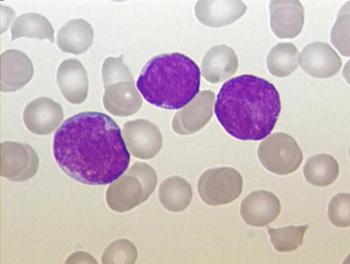
Selinexor Plus Sorafenib May Benefit Patients with Relapsed/Refractory FLT3-Mutated AML
Data presented at the 2017 ASH annual meeting revealed that the combination of selinexor and sorafenib appears to be safe with clinical activity in patients with relapsed/refractory FLT3-mutated acute myeloid leukemia.
The combination of selinexor and sorafenib appears to be safe with clinical activity and apoptosis induction in patients with relapsed and/or refractory FLT3-mutated acute myeloid leukemia (AML), according to results from a new phase I/II study. Investigators reported at the 2017 annual meeting of the American Society of Hematology (ASH), held December 9-12 in Atlanta, Georgia, that the benefit with this combination therapy was especially pronounced in patients exposed to prior FLT3 inhibitors.
Naval Daver, MD, from University of Texas M.D. Anderson Cancer Center in Houston, Texas, and colleagues found that when the two agents were combined they suppressed phosphorylation levels of FLT3 and its downstream signaling mediators ERK/AKT. For this investigation, patients were given selinexor orally twice a week for 3 weeks (2 weeks on and 1 week off) in 28-day cycles. Patients also received sorafenib continuously at a dose of 400-mg twice daily. The median age of the 14 patients in this study was 71 years (range, 24-81) and the median number of prior therapies was 3 (range, 1-5).
The median duration of treatment for the 14 patients was 28 days (range, 14-122 days). The primary objectives for this study included the rate of complete remission (CR) + CR with incomplete count recovery (CRi) + partial response + > 50% blast reduction within 3 months of therapy initiation. The researchers also assessed safety and overall survival (OS).
The study showed that 4 patients (29%) achieved CR + CRi and 2 patients (14%) achieved > 50% blast reduction. All 6 of these best responders had a prior FLT3 inhibitor resulting in a response rate of 55% in patients with prior FLT3 inhibitor therapy. Investigators found that 3 of the 4 patients who achieved CRp/CRi had a negative reverse transcriptase polymerase chain reaction for FLT3.
The study showed the most common grade 3/4 adverse events were bleeding (4 patients had gastrointestinal bleeding and 1 patient had intracranial bleeding), febrile neutropenia, pneumonia, and syncope. The investigators found that the median OS was 3.5 months (range, 0.9-15 months).
Currently, selinexor has been administered to more than 2,100 patients in clinical trials, according to Karyopharm Therapeutics, which is developing this agent. Evidence of single-agent anti-cancer activity has been observed in many patients and selinexor has been sufficiently well tolerated to allow some patients to remain on therapy for prolonged periods, according to the company.
Newsletter
Stay up to date on recent advances in the multidisciplinary approach to cancer.

















































































